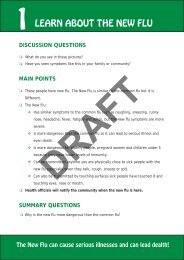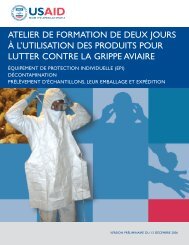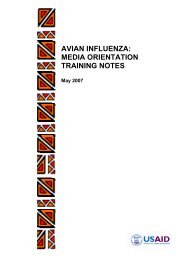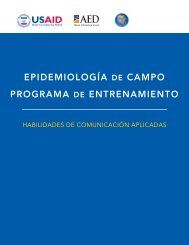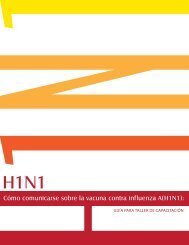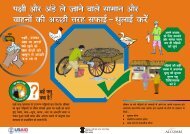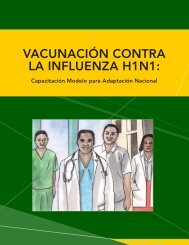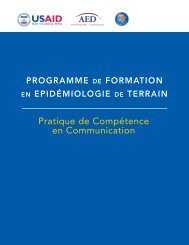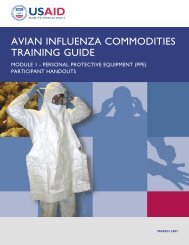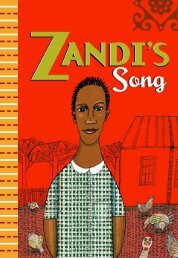AI.COMM - Avian and Pandemic Influenza Resource Link
AI.COMM - Avian and Pandemic Influenza Resource Link
AI.COMM - Avian and Pandemic Influenza Resource Link
You also want an ePaper? Increase the reach of your titles
YUMPU automatically turns print PDFs into web optimized ePapers that Google loves.
70<br />
Because it was so diffi cult to increase personal risk perception for avian infl uenza,<br />
<strong>AI</strong>.<strong>COMM</strong> relied on using other “entry points” for information that were identifi ed<br />
through research. Research examined how communities viewed disease causation,<br />
<strong>and</strong> ascertained the complex uses of chickens <strong>and</strong> whether communities believed<br />
that there were alternatives to their use. This included considering livelihood issues<br />
such as whether poultry are the main source of income, <strong>and</strong> how that income is<br />
used (e.g., used for education <strong>and</strong> health expenses) as well as social roles of poultry,<br />
including rituals <strong>and</strong> religious or social occasions (e.g., weddings, funerals). In the<br />
case of subsistence farmers, poultry is used as the main source of protein in the<br />
family’s diet, <strong>and</strong> its absence, therefore, could have a large impact on the family’s<br />
nutritional status. These ties to poultry – from a<br />
livelihood to a cultural perspective – were more<br />
deep-seated than previously realized, <strong>and</strong> presented<br />
a challenge for changing behaviors related to<br />
raising poultry.



